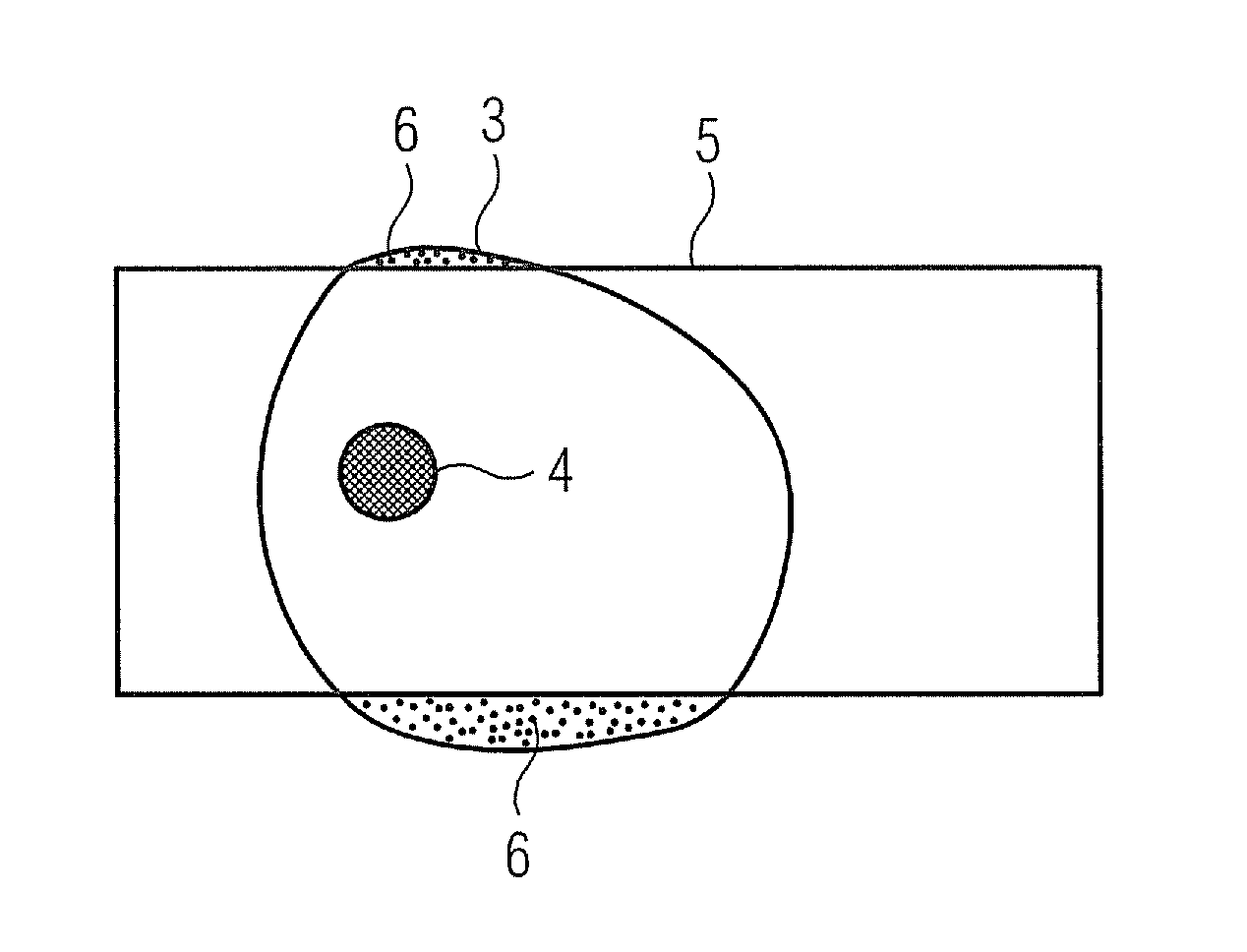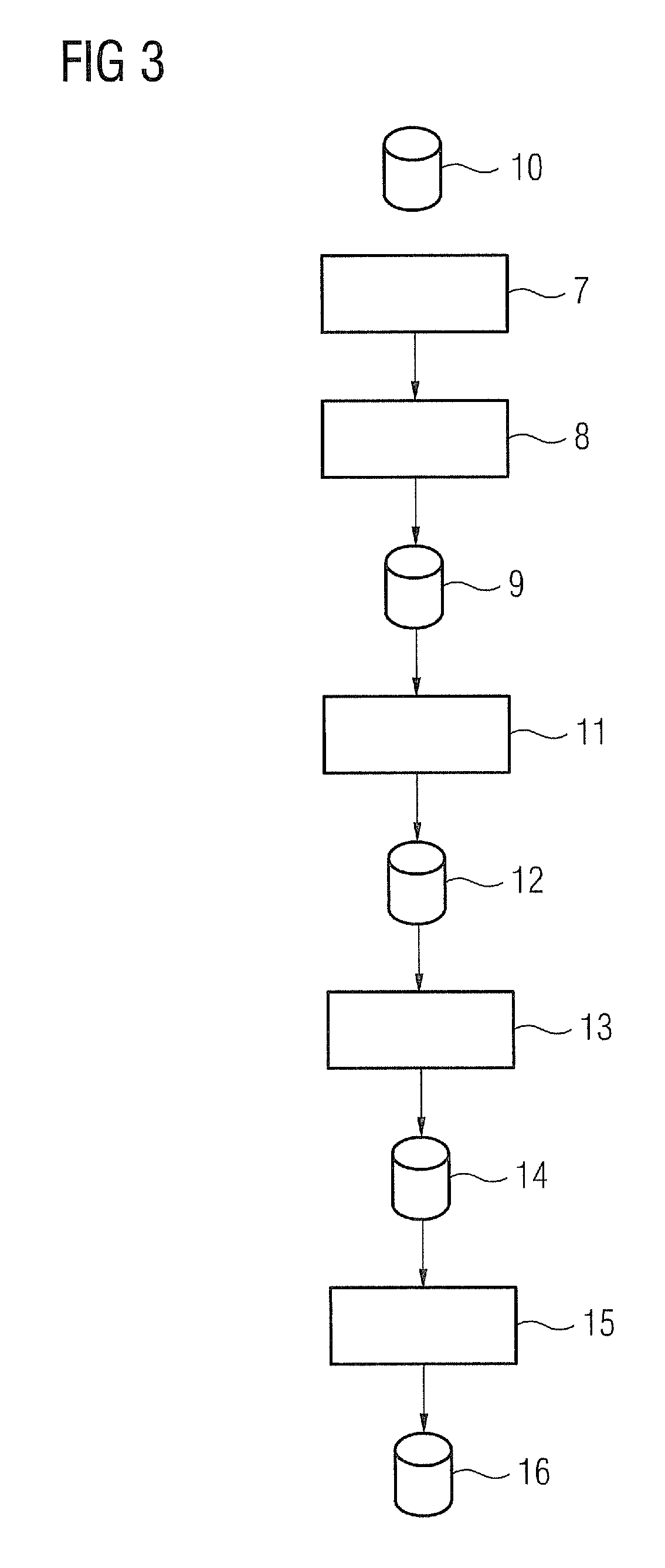Method for reconstruction of a three-dimensional image data set and x-ray device
a three-dimensional image and data set technology, applied in the field of three-dimensional image data set and x-ray device reconstruction, can solve the problems of generating unwanted artifacts, truncation artifacts, metal artifacts, etc., and achieve the effect of improving computational efficiency and improving the quality of the reconstruction
- Summary
- Abstract
- Description
- Claims
- Application Information
AI Technical Summary
Benefits of technology
Problems solved by technology
Method used
Image
Examples
Embodiment Construction
[0033]FIG. 1 shows an inventive X-ray device 1. This here takes the form of a CT-device (computed tomography device), such as is widely known in the prior art. Here projection images, which in their entirety form projection data, are captured from different projection angles, in order to reconstruct therefrom a three-dimensional image data set of an object to be captured. To this end it can for example be provided that an X-ray emitter and if applicable also an X-ray detector lying opposite each other move on a prescribed capture trajectory, for example a circular path, in order regularly to capture two-dimensional projection images.
[0034]The X-ray device 1 now further comprises a control device 2, which controls operation of the X-ray device 1 and is embodied for execution of the inventive method.
[0035]The inventive method, which is to be described in greater detail below, relates to the most efficient and complete correction of artifacts, which are triggered by means of projection...
PUM
 Login to view more
Login to view more Abstract
Description
Claims
Application Information
 Login to view more
Login to view more - R&D Engineer
- R&D Manager
- IP Professional
- Industry Leading Data Capabilities
- Powerful AI technology
- Patent DNA Extraction
Browse by: Latest US Patents, China's latest patents, Technical Efficacy Thesaurus, Application Domain, Technology Topic.
© 2024 PatSnap. All rights reserved.Legal|Privacy policy|Modern Slavery Act Transparency Statement|Sitemap



